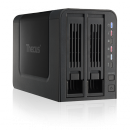Secure Prompting: Secrets Handling and Least Privilege
You're managing sensitive data, and you know it's crucial to keep secrets secure in today’s complex environments. If you only grant access to those who truly need it, you can limit damage from potential breaches. But how do you enforce least privilege and handle secrets without sacrificing agility or compliance? There are proven strategies you can use—but the real challenge lies in keeping everything both secure and efficient.
Understanding Secrets and Their Role in Security
As organizations increasingly rely on digital systems, it's essential to have a clear understanding of what constitutes a "secret" in the context of data security. Secrets include elements such as API keys, passwords, and tokens that play critical roles in modern infrastructure. Effective secrets management is therefore crucial.
Failure to implement comprehensive access controls or adhere to the principle of least privilege can lead to significant security vulnerabilities, such as unauthorized access and data breaches. It's important to adopt sound security practices, which include centralizing management tools and restricting permissions to specific users, as these measures directly enhance data protection.
Moreover, protecting secrets effectively not only helps prevent unauthorized access but also plays a significant role in maintaining an organization’s reputation and safeguarding its resources. Organizations should invest in robust solutions and establish workflows that facilitate ongoing detection and defense against potential threats.
Centralized Strategies for Managing Sensitive Data
To effectively manage sensitive data and mitigate associated risks, the implementation of centralized strategies is advisable. Centralizing secrets management using a single tool or vault enhances the enforcement of least privilege and role-based access controls. This approach facilitates the monitoring of who's access to sensitive data, thereby improving oversight and control.
Additionally, centralized management allows for automated secrets rotation, which can significantly reduce vulnerabilities linked to outdated credentials. This practice not only reduces the risk of unauthorized access but also aids in maintaining compliance with regulatory requirements by enabling continuous monitoring and auditing processes. By identifying potential breaches early, organizations can mitigate risks before they escalate into more serious issues.
Moreover, a centralized approach minimizes the likelihood of human error and can improve operational efficiency, particularly within complex multi-cloud environments. By providing a streamlined management process, organizations can maintain security while simplifying the oversight of sensitive data.
Building High Availability and Performance Into Secrets Management
Secrets management systems play a vital role in ensuring secure application operations, necessitating a focus on both high availability and performance from the beginning of their design. Selecting robust technology is essential for enabling centralized management and redundancy, which can help minimize downtime effectively.
Implementing automated secret rotation is critical for reducing risk exposure, as it allows organizations to change secrets without negatively impacting application performance. Additionally, utilizing load balancing techniques ensures that authorized applications can access secrets quickly, even during periods of high traffic, thereby maintaining operational efficiency.
By optimizing secrets management for privileged access and scalability, organizations can mitigate the risk of service disruptions while accommodating growth. This approach not only safeguards sensitive data but also ensures that secrets remain accessible and reliable across multi-cloud environments.
Ultimately, a well-structured design for high availability will contribute to the overall resilience and security of the secrets management framework, ensuring that applications function smoothly and safely.
Principles of Least Privilege in Modern IT Environments
The Principle of Least Privilege (PoLP) is a foundational concept in cybersecurity that continues to play a crucial role in safeguarding against unauthorized access, particularly as organizations navigate complex and distributed IT environments.
By implementing PoLP, organizations can ensure that users, applications, and privileged accounts are allocated only the permissions necessary for their specific functions, thereby minimizing unnecessary access.
In modern IT frameworks, especially those involving cloud services, PoLP is often integrated with advanced features such as dynamic secrets and Just-In-Time access.
These approaches further refine privilege management by issuing temporary permissions as required and dynamically adjusting access based on real-time contextual factors. This method is designed to reduce the risks associated with privilege creep—where users accumulate excessive access rights over time—and to mitigate potential security breaches that may arise from such expanded privileges.
To maintain effective access controls, organizations should regularly review and adjust permissions and diligently track privileged activities.
By doing this, organizations can't only enhance their security posture but also ensure compliance with regulatory requirements.
Proper management of privilege allocation fosters robust barriers against unauthorized access, enabling organizations to protect their critical assets effectively and maintain system integrity.
Implementing Automated Secrets Rotation and Dynamic Access
Automated secrets rotation and dynamic access are two strategies that can enhance access controls and mitigate security risks associated with unauthorized access.
Automated secrets rotation involves regularly updating passwords and credentials, which helps maintain their effectiveness and minimizes the likelihood of exploitation by malicious actors. This practice reduces the risk associated with credentials that may have been compromised or are no longer secure.
Dynamic access, on the other hand, provides temporary permissions based on contextual information, such as the user's role, location, or the specifics of the request, which can help limit potential security vulnerabilities. By granting access that's both time-limited and context-specific, organizations can maintain better control over their sensitive systems while also responding to changing security dynamics.
Utilizing robust secrets management tools facilitates the implementation of these strategies by automating the update processes for secrets and monitoring for outdated or hardcoded credentials. Such tools can enhance compliance with security policies and industry standards.
The integration of automated secrets rotation with dynamic access effectively strengthens an organization's security framework, offering operational efficiencies while delivering improved protection for sensitive data.
These approaches contribute to a more secure environment by managing the risks associated with static credentials and unnecessary privileges.
Securing Secrets in Memory and Running Environments
While secrets management typically emphasizes storage solutions and access controls, it's essential to also consider the behavior of secrets in memory and during operation within applications. Minimizing the duration that secrets reside in memory is crucial, as this can reduce the risk of unauthorized access and limit the attack surface that potential attackers can exploit.
Implementing the principle of least privilege is important; this involves restricting process access rights to secure memory, thereby ensuring that only essential components have the ability to interact with sensitive data. A thorough understanding of this strategy requires acknowledgment that operating system protections may not be entirely effective against contemporary threats.
Where feasible, employing physical memory isolation can enhance security measures. Furthermore, it's important to analyze potential threats systematically to facilitate effective risk mitigation and limit exposure throughout the access management framework.
This approach enables organizations to strengthen their security posture while managing sensitive information in dynamic environments.
Access Controls and Auditing for Reduced Exposure
Implementing robust access controls and continuous auditing is a critical strategy for managing sensitive information and mitigating the risk of unauthorized access. By applying the Principle of Least Privilege, organizations can ensure that individuals and applications are granted only the permissions necessary for their roles, which helps minimize the potential for accidental exposure or intentional compromise.
Automated auditing allows for real-time monitoring of access to sensitive secrets, enabling prompt identification of any anomalies that may indicate unauthorized access attempts. This practice is essential for maintaining oversight and can significantly enhance the organization’s security posture.
Additionally, establishing a comprehensive logging mechanism is important for demonstrating compliance with regulatory requirements and facilitating effective incident investigations. A well-structured logging system not only captures access events but also provides a clear record of actions taken within the system, aiding in accountability.
Furthermore, incorporating proactive security measures, such as alerts for unusual activities, enables organizations to respond quickly to potential threats.
This layered approach to secret management contributes to a more controlled and transparent environment, ultimately strengthening the overall security framework.
Optimizing Secrets Handling in CI/CD Pipelines
In CI/CD pipelines, the management of secrets is a critical aspect that requires careful attention to mitigate the risk of unauthorized access. It's advisable to integrate established secrets management tools, such as HashiCorp Vault or AWS Secrets Manager, which facilitate the centralization and automation of secret storage. This approach enhances the security posture of the deployment process.
Dynamic secrets generation should be enabled during runtime to prevent the inclusion of sensitive information in the source code or logging outputs. This practice reduces the likelihood of exposing credentials in version control systems or runtime logs.
Furthermore, implementing automated secrets rotation is crucial; this ensures that secrets are regularly updated, thus minimizing the time window for potential misuse.
Access controls should be strictly enforced based on the principle of least privilege, ensuring that only those services and users with a legitimate need can access the secrets. Additionally, incorporating secret masks in logs helps to obscure sensitive information, reducing the risk of exposure in monitoring or debugging sessions.
Lastly, continuous monitoring of the CI/CD pipeline is essential to identify and respond to any unauthorized attempts to access secrets. This approach allows teams to promptly address any security incidents and maintain the integrity of their deployment processes.
Addressing Cloud and Multi-Cloud Secrets Management Challenges
In the context of managing secrets within Continuous Integration and Continuous Deployment (CI/CD) pipelines, challenges become more pronounced when dealing with cloud and multi-cloud environments. The distribution of sensitive data across various platforms complicates secrets management, increasing the potential for security breaches.
To mitigate the risk of unauthorized access, it's crucial to avoid hardcoding secrets within applications. Instead, organizations should utilize automated tools that can manage and rotate secrets effectively.
Implementing strict access controls through the Principle of Least Privilege is essential. This principle ensures that only individuals who require access to sensitive secrets for their role are granted permission, thereby minimizing the attack surface.
Regular audits are necessary for maintaining compliance and identifying vulnerabilities within the secrets management framework. These audits can provide insights that contribute to improving the overall security posture of the system.
Adopting these strategies is vital for ensuring that secrets in cloud environments are protected and managed in a compliant manner. Such proactive measures can significantly enhance the governance of sensitive data across various platforms.
Responding to Incidents and Ensuring Continuous Monitoring
Effective secrets management relies heavily on constant vigilance and monitoring.
Continuous and real-time monitoring are essential practices for quickly identifying unauthorized access or unusual behaviors that may suggest security incidents. Implementing automated alerts and comprehensive logging can provide visibility into who accesses sensitive information and the timing of those access events.
Regular audits of access permissions and privilege assignments are necessary to mitigate privilege creep and to ensure compliance with least privilege principles.
In the event of a security incident, an incident response plan should explicitly address secrets management to facilitate rapid containment and recovery efforts.
Conclusion
By embracing secure prompting strategies, you put least privilege and robust secrets handling at the core of your security posture. You'll reduce risks by limiting access, automating secrets rotation, and leveraging dynamic access controls. When you actively audit, optimize your pipelines, and address cloud challenges, you're not just protecting sensitive data—you're meeting compliance needs and ensuring business continuity. Stay proactive, keep your secrets safe, and build resilience into every layer of your IT environment.



















 RSS Complets
RSS Complets